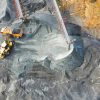In October of 2018 the UN Intergovernmental Panel on Climate Change (IPCC)
released a special report outlining the urgency for unprecedented action and changes needed within the next 12-years in order to prevent a more than 2°C rise in temperature in our global climate. Should this not be achieved, we will experience irreversible knock on effects, creating an “unliveable hothouse planet”.
Twelve years doesn’t allow for much dreaming for today’s youth. They are unarguably the most impacted by the environmental crisis. Since their futures don’t offer the luxury of apathy, it’s the youth showing us what taking ‘urgent’ action really looks like.
Here are 3 ways the youth are leading the call for Climate Action
1. The youth are using clear narratives to urge policy change
The Climate Crisis has proven to be a politically divisive issue the world over. But the youth are using their personal narrative to urge on policy change.
Dylan D’Haeze, 16, after witnessing plastic waste on California’s shorelines started producing environmental documentaries under the award-winning series Kids Can Save The Planet. Dylan reminds you that “If you elect people the world really needs into office, then the world will change.”

A brief overview on policies youth are wanting amended in the name of Climate Action
- British students are requesting inclusion in decision-making on environmental issues and are calling for the voting age to be lowered to 16
- In South Africa, Zola and supporters are urging government to declare a climate emergency, place a moratorium on new fossil fuel licenses and include climate change education in the school curriculum
- Students in Australia have submitted demands for 100% renewable energy by 2030 and no new coal, oil or gas projects
- Kids Against Plastic in the UK are urging for more plastic-clever implementation
- Youth in Europe have sued governments and the US for failing to take on protective policies toward citizens already experiencing the environmental changes predicted by scientists.

In Cape Town, 11-year old Zola Mgogwana’s observations of climate change on her home township in Khayelitsha inspired her to volunteer with Earthchild Project. “I want to show the world that we, as black youth from Cape Town’s under-resourced communities and townships, do care about the climate – because we are the ones that get affected the most,” says Zola.
Lily Platt, 11, of Zeist, Netherlands, started collecting plastic to and from school. Learning about the micro-plastic soup in the ocean and seeing evidence of it in her own neighbourhood has given her enough evidence of the sickness of our planet. “What happens to your body if you are 2°C above your normal temperature? You feel very ill, so imagine how the planet will feel,” Lily states.
“We simply want our futures,” share Harriet O’Shea Carre and Milou Albrecht, both 14, of Castlemaine, Victoria, Australia, who’s biggest fears are the constant threat of bush fires near their homes.
These perspectives are uncluttered by political affiliation and monetary motif. They say it as it is. The hundreds of thousands of youth protesting with them likely have narratives just like this.
2. The youth have created universal association
The global #Fridaysforfuture initiative took shape after Greta Thurnberg sat outside parliament on Fridays in August 2018 during school hours with a sign that read ‘School Strike for Climate’.
They’ve made their cause – all our cause – a household term, that will now stay top of mind once a week, every week.
You could say they brought home the point that the climate crisis can’t afford to only be given attention yearly on World Environment Day or at COP.

3. The youth continue to create conscious cohesion
Greta Thurnberg, who has since been nominated for a Nobel Peace Prize, may have set events in motion but the now youth-lead movement for Climate Action is gaining traction because it’s happening en-masse.
Earlier this year in May over 1.5 million young people spanning more than 125 countrieswalked out of schools, colleges and universities in the biggest day of global climate action to date.
But the youth aren’t interested in speaking alone. In Switzerland, their recent and fourth climate staged protest was intentionally shifted from the now strongly associated Friday, to a Saturday in order to include working citizens. Parents were expressly invited to join.
The usual advice is to stay calm in a crisis. But when a then 15-year old Greta digests the content of a scientific report like that of the IPCC and instead urges government and lawmakers that hopeful appeasement is not the answer anymore, because, in her words, “I want you to panic. I want you to feel the fear I feel every day,” the urgency with which the youth are leading is not only understandable, it is necessary.
Images sourced from Unsplash
References
https://www.theguardian.com/commentisfree/2019/feb/20/manifesto-youth-climate-strikers-win-fight
https://medium.com/wedonthavetime/37-things-you-need-to-know-about-the-new-ipcc-report-b07cd2cca0f1
https://www.theguardian.com/environment/gallery/2019/may/24/student-climate-strikes-around-the-world
https://www.thelocal.se/20190314/how-greta-thunbergs-school-strike-became-a-global-climate-movement

